Welcome to the Salesforce flows tutorial. This training will get you up and running in Salesforce Flows from scratch and will turn you into a Flow master. There are many different automation options when it comes to Salesforce, but none are quite as powerful as Salesforce Flow. In this session, we will learn about what a flow builder is and the type of flows in Salesforce. This going to be your guide to Salesforce flow to become an expert.
What are Salesforce Flows?
Salesforce Flows are an automation tool provided by Salesforce which can be used to perform various tasks like, Sending an Email, Posting a chatter, Sending custom Notifications &, etc. Flow is the most powerful automation tool provided by Salesforce. It can be trigger for record insert, update and record delete and it can be run for both after and before events.
Types of Flows in Salesforce
What are the different types of flows in Salesforce? Currently, we have the following types of Flows in Salesforce.
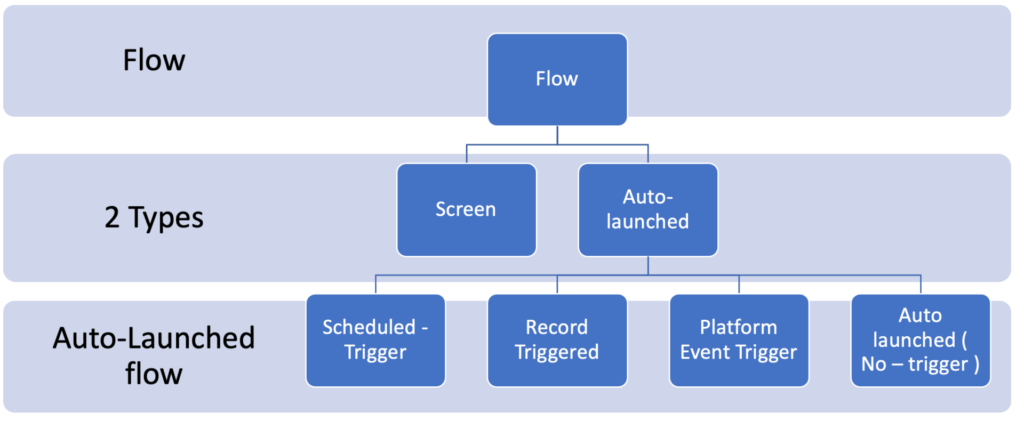
1. Screen Flow
With Screen Flow you can create a custom UI (user interface) and guide users through a business process that can be launched from Lightning Pages, Experience Cloud (previously known as Community Cloud), quick actions and more.
2. Record-Triggered Flow
Record-Triggered Flow launches when a record is created, updated, or deleted. So far, we have used Apex triggers for this automation, some of which can now be done using Flows.
3. Scheduled-Triggered Flow
This flow launches at the specified time and frequency for each record in a batch. Traditionally, we have met this kind of requirement by using Apex batch jobs.
4. Platform Event Flow
Platform event flow Launches when a platform event message is received. For example, you can pump the data from an external system in Platform Events and then use Flows to split and save the records in different objects.
5. Autolaunched Flow
Auto Launches flow launch when invoked by Apex, Process Builder or even REST API.
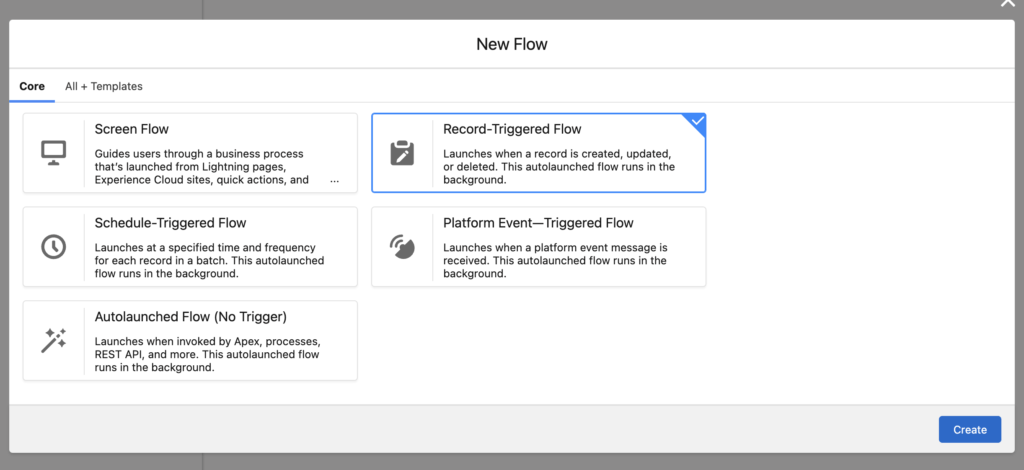
Salesforce Flow Components
- Interaction
- Logic
- Data Elements

Introduction to Salesforce Flows Video
Check out below Salesforce flow video to understand the basic of Flow builders.
Salesforce Flow Limits and Considerations
- Limits per flow interview: Executed elements at runtime per flow: 2,000
- General Flow Limits:
- Versions per flow: 50
- Active flows per flow type: 5 in PROFESSIONAL EDITIONS and 2000 in all others
- Total flows per flow type: 5 in PROFESSIONAL EDITIONS and 4000 in all others
- Per-Transaction Flow Limits:
- Total number of SOQL queries issued: 100
- Total number of records retrieved by SOQL queries: 50,000
- Total number of DML statements issued: 150
- Total number of records processed as a result of DML statements: 10,000
- Flow Usage-Based Entitlements.
Learn more about Flow Limits and Considerations.
Flow Builder Training
Are you new to Flow Builder? Check out Apex Hours Complete training on Salesforce Flow Builder.

Salesforce Flows vs. Apex
Here are some differences between Salesforce builder and Apex classes.
| Salesforce Flow Builder | Apex |
| Flow features are not limited based on the edition. | Apex is not available in Essentials, and some Apex features are limited in Professional. |
| Flow can be build by the Salesforce Admin | You should have the development skills to build Apex triggers. |
| Use Salesforce flow builder for simple automation and notification work. | Use Apex for complex logic. |
| You can perform API callout from Salesforce flow. | Recommend to use Apex for Enterprise Salesforce Integration work. |
| You can test your flow using new feature called Flow Tests, But this has some limitations. | Salesforce Test classes are the perfect way to unit test your code. |
Learn more about Salesforce Flows vs. Apex.
FAQ’s
Lightning Flow: Includes tools for building, managing and running flow and processes.
Flow Builder: Point and click tool for builder flows
Flow: Application that automates business processes by collecting data and doing something in Salesforce or external System.
There are 5 types of Salesforce flows.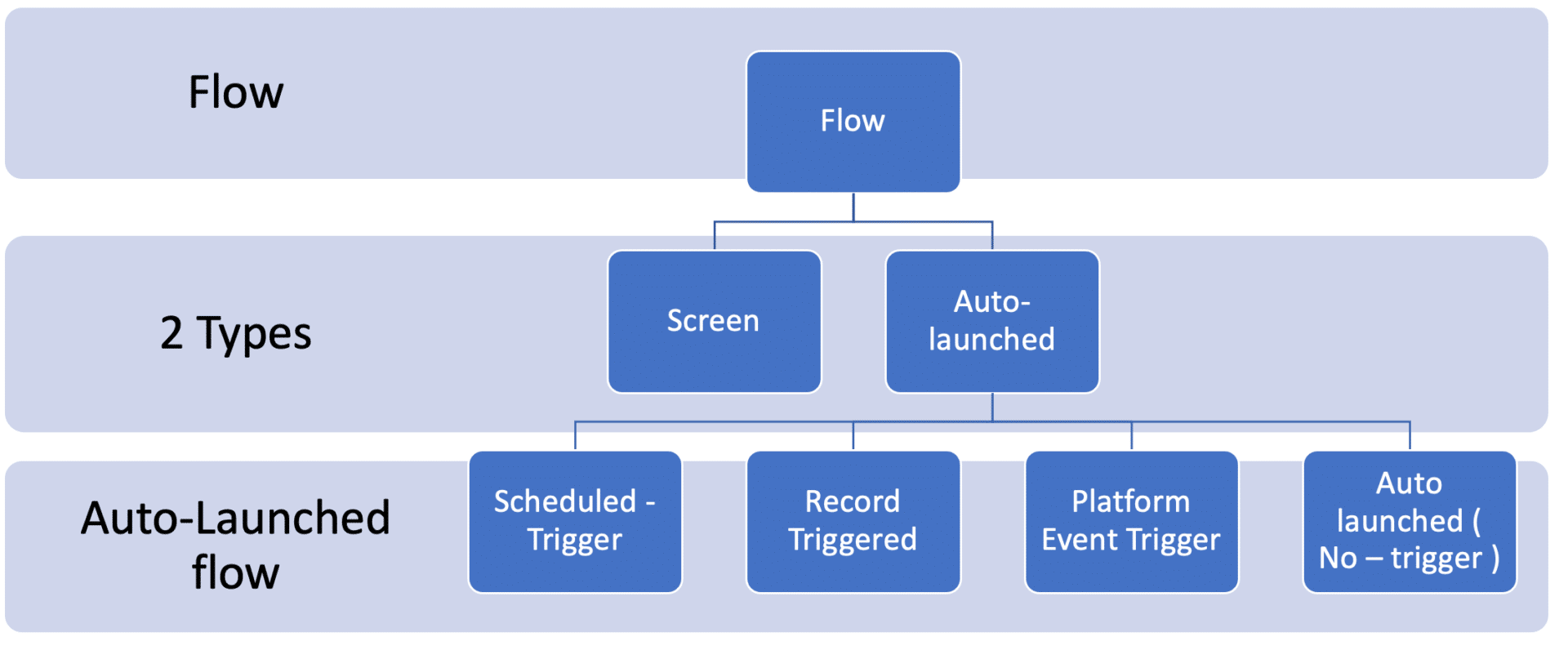
1. Always! Plan Before You Build
2. No DML Statement In Loops
3. Use The Advanced Technique To Merge Decision Node
4. Build Reusable Flow(S) – Subflow(S)
5. Don’t Create Flow For Everything
6. Build In A Test/Sandbox Environment
7. Supercharge Flow With Invocable Apex
8. Don’t Hardcode IDs, Query For Them!
Learn more here.
Summary
Salesforce Flow is the future of the Salesforce automation tool. If you are new to Salesforce then please check our Salesforce Admin Training here. Check our Salesforce Flow Playlist.

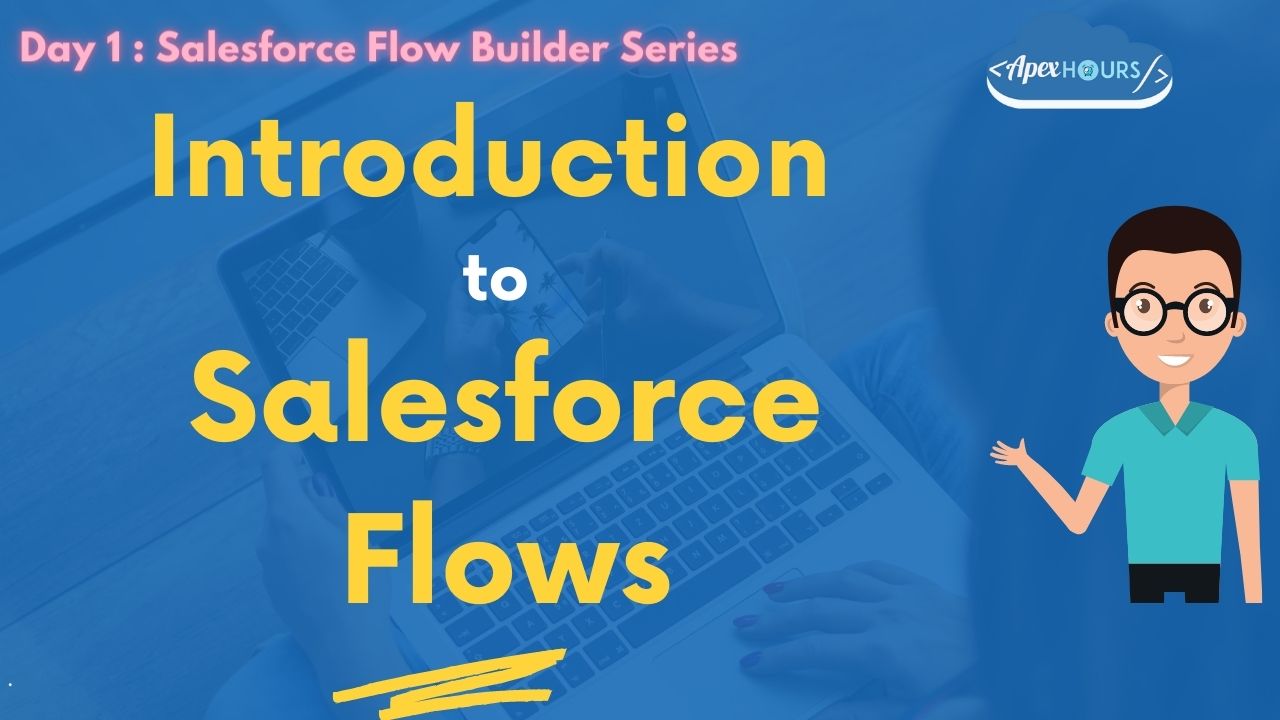

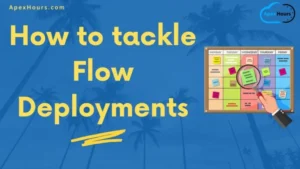


Session completed
We tried our best to include real-time scenarios as an example in demo. I hope you will enjoy it. Keep learning Salesforce flow builders.
Easy to understand explanation and great session (thanks for useful tips during the demo though ) !
We tried our best to include real-time scenarios as an example in demo. I hope you will enjoy it. Please help us to spread the words
I have completed the session. It was very informative session, I have learnt new things. Thank you for such a great initiative
Session completed
Great session by Amit.
Keep watching full Salesforce flow builder training
Nice Article!
Session 1 completed and looking forward to other sessions
Keep watching.
done – very clear explanations
Thanks
thanks a ton amit.I can understand the effort of making such a great session. I learned lots of things and it’s the exact base that no one highlighted in session. catching picklist values to global variable storage. I have a suggestion I design something a bit different but you would love to see it.
Thanks glad you like it. We would love to learn about your idea